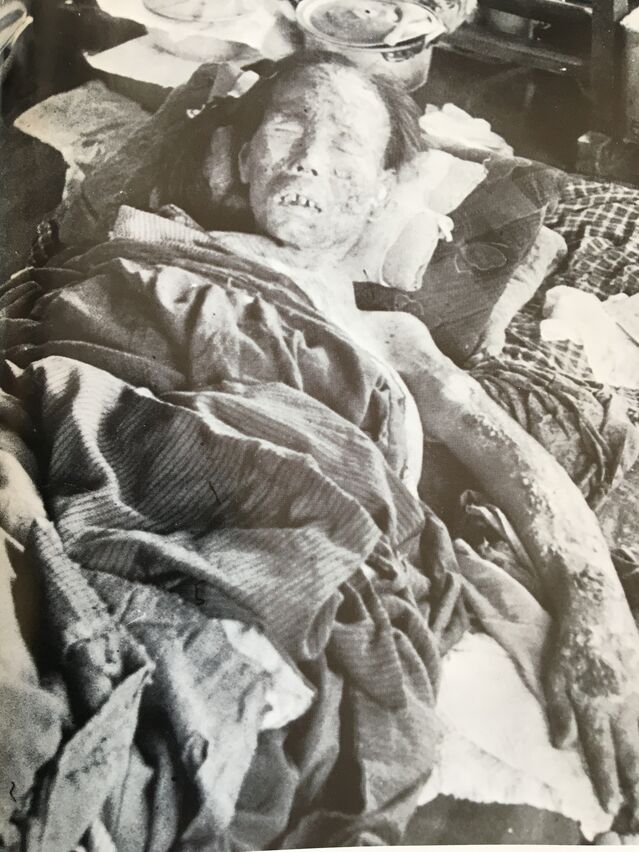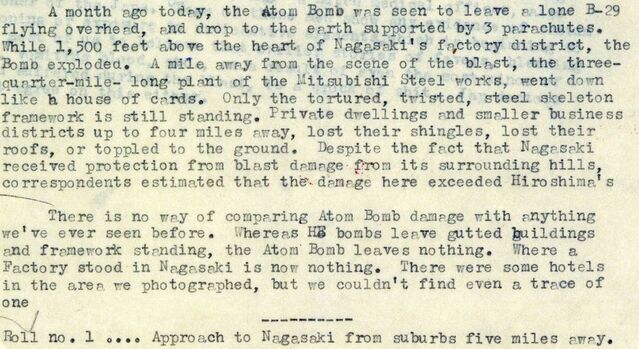Fear
Will Cold-War Nucleomituphobia Return?
World War III is not likely, but our fears may be elevated right now.
Posted March 6, 2022 Reviewed by Gary Drevitch
Key points
- Russia’s elevated state of nuclear readiness raises the fear-gauge.
- Would humans be capable of dealing with mental health damage after seeing nuclear bomb casualties as they happen?
- The former Mayor of Hiroshima petitions Vladimir Putin, collecting tens of thousands of signatures.

by Joseph Mazur and Tadatoshi Akiba
Few people know more about what happened during and after the Hiroshima and Nagasaki bombings than the former Mayor of Hiroshima, Tadatoshi Akiba, the former president of Mayors for Peace and an expert on nuclear issues. He received the Ramon Magsaysay Award (the Asian Nobel Prize) for his lifelong role as a transformative world leader, the Otto Hahn Peace Medal, and the Seán MacBride Peace Prize for outstanding work for peace, disarmament, and human rights. Mayor Akiba is my guest joint author for this posting.
"In 1945, we unleashed something like the world had never seen, and that is a pop gun compared to what can be done now." —Warren Buffett
A recent relatively calm post, “Are Mushroom-Cloud Nightmares Returning?” suggests that the words of Vladimir Putin’s February 24, 2022, incendiary speech were meant to remind the world that Russia has 6,200 nuclear weapons, not to signify that he will use any. In phrases “horrible consequences” and “it will lead you to such consequences that you have never encountered in your history," the pronoun "it" was deliberately ambiguous, even though it syntactically links to the obliquely translated phrase “Whoever tries to hinder us." Putin’s speech reads as a threat. So, as the post pointed out, “The worry is not rational. World War III is not likely.” It also noted that “Under healthy reasoning, we should feel that a nuclear conflict in Ukraine is not likely.”
What a difference a week makes. Russia is now in a higher state of nuclear readiness to raise the fear-gauge.
The fear now has become rational
A nuclear conflict in Ukraine is still not likely if we believe that Vladimir Putin is sane. But what if he is not? To any stable person, it now seems that his “genius” invasion will corner Russia into a protracted war that will take the lives of thousands of Russian soldiers and many more thousands of Ukrainians. Poor decisions are not mental health problems. A cornered military commander will use whatever means necessary to win a battle. Insanity, in gist, is a mental illness whereby a person cannot distinguish fantasy from reality and is unable to make rational judgments.
We cannot know what is inside Putin’s head. The American Psychiatric Association’s Goldwater Rule bars diagnosing anyone not personally evaluated. But the person in question is the leader of a country under an increased nuclear alert status during an invasion that is not going well. Putin’s war, as Tom Nichols, Professor at the U.S. Naval War College, writes in his Atlantic newsletter, leaves him “embroiled in perhaps the greatest military blunder in modern European history.” Blunderings of war beget rage, and with rage comes mishaps. Putin must be fuming as every day of Ukraine’s resistance points to losing his war. To him, a lost war is not an option; so what else could he do? Plenty.
Russia has never agreed to a No-First-Use nuclear policy. Its nuclear deterrent policy permits the use of nuclear weapons in response to a conventional strike on “critical government facilities and military infrastructure,” including cyberattacks. That threat brings with it the fear of madness because unavoidable accidents of warfare could trigger an unimaginable response. Rational or not, Putin’s threat brings a renewal of Cold War nucleomituphobia bomb shelters stocked with canned food and water.
The Japanese people learned about the extent of misery in Hiroshima and Nagasaki seven years after the bombings
After the Hiroshima and Nagasaki bombings, the General Headquarters of the occupation forces enacted a “Press Code” so no information about humans suffering from the atomic bombings reached the public. That code was lifted in 1952 when the peace treaty between Japan and the U.S went into effect.
The world, however, learned about the suffering a few years earlier, when, in August 1946, the New Yorker magazine published John Hersey’s detailed report of human sufferings of the Hiroshima bombing. Then, in September 1947, Life magazine presented traumatizing photographs of scarred, burned, and misshapen survivors. That was when the world learned about the indescribably tragic and catastrophic results of the atomic bombings. Those photos would have been too shocking to see too soon after.
But now we live in a world of screens and cell phones that provide immediate pictures of news. We know that, in the event of a nuclear bombing, this time would be far worse because the world would witness the unbearable horror and hell of the destruction of human life in real-time on screens.
Are humans capable of surviving mental health traumas that are sure to come from seeing nuclear bombing casualties as they happen?
After one nuclear bombing, we would see the casualties instantly, not one or two years later when somehow the mind puts all horrors in memory cells dealing with past events. We would see humans, possibly hundreds of thousands, being scorched, crushed, and vaporized. The photos below are likely to jolt your saddest emotions, yet they only tell a story of history. The next atomic bombing, if there ever will be a next, will be presented in color-video on a few billion phones. Our brains may not be prepared to deal with the emotions that will come. How much mental damage will it bring?
It would mean that billions of people would have to continuously witness the living torture experienced by the people of Hiroshima and Nagasaki in real time. How would the aftermath look and feel? How will we narrate such a historical tragedy?
A petition to Putin
Hibakusha (A-bomb survivors) and citizens of Hiroshima and Nagasaki know the misery and inhumanity of the atomic bombs from their own experience. That is why we have urged that nuclear weapons must not be used against human beings, let alone used on Earth for any reason. And so, in my petition to Vladimir Putin and other world leaders, which has so far collected over 50,000 signatures, I am asking for an immediate declaration of a no-first-use policy of nuclear weapons, as China has made. If you agree, please click here to join the 50,000 signatories.



References




